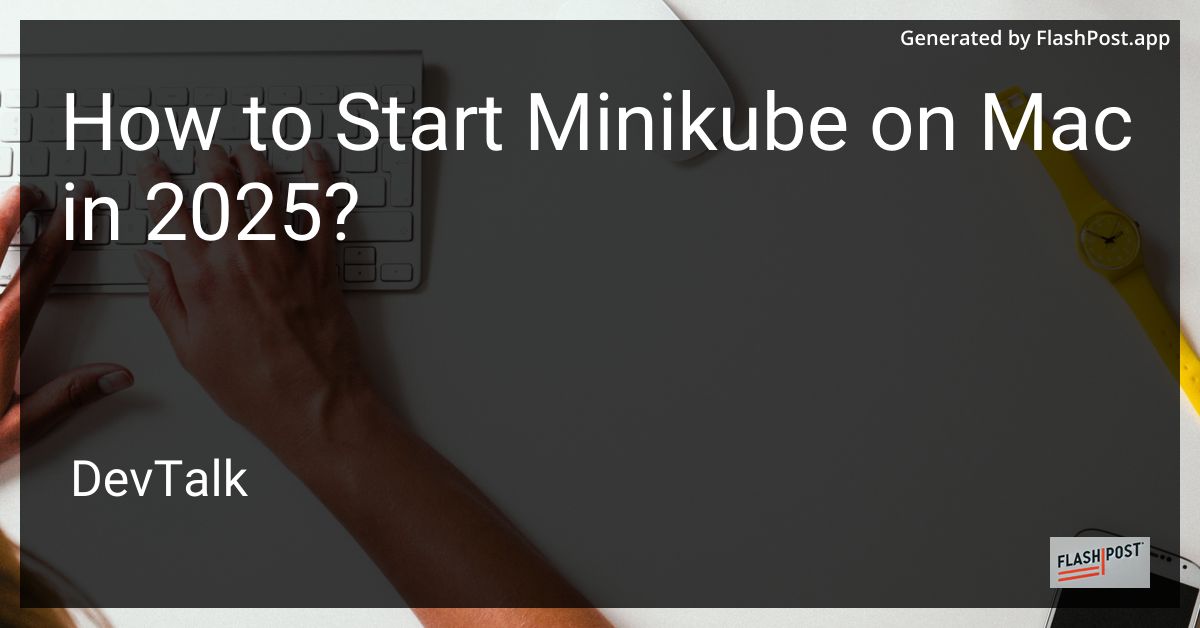How to Start Minikube on Mac in 2025?
title: How to Start Minikube on Mac in 2025
description: An in-depth guide to launching Minikube on a macOS system in 2025, including essential tips, troubleshooting, and external resources for further exploration.
keywords: Minikube, Kubernetes, Mac, macOS, 2025, DevOps, containerization
How to Start Minikube on Mac in 2025
Minikube is a fantastic tool for local Kubernetes development, providing a simple way to run Kubernetes clusters on various platforms. If you are a Mac user looking to set up Minikube on your system, this guide for 2025 will give you the most up-to-date instructions you need to get started quickly.
Prerequisites
To start Minikube on your Mac in 2025, ensure you have the following prerequisites:
- Homebrew: The package manager for macOS is recommended for installing software.
- Kubernetes CLI (kubectl): The command-line tool for Kubernetes. You can install it via Homebrew with
brew install kubectl. - Hypervisor: Make sure you have a hypervisor installed, such as Docker or VirtualBox.
Step-by-Step Instructions
Step 1: Install Minikube
First, you'll need to install Minikube using Homebrew. Open your Terminal and execute:
brew install minikube
This command will download and install the latest version of Minikube available in 2025.
Step 2: Start a Minikube Cluster
After installation, you can start your Minikube cluster by running:
minikube start --driver=docker
If you prefer to use VirtualBox, you can replace --driver=docker with --driver=virtualbox. This command initializes a single-node Kubernetes cluster on your Mac.
Step 3: Verify Minikube Status
To ensure that Minikube has started successfully, check the status using:
minikube status
If everything is running smoothly, you'll see your cluster's status as Running.
Troubleshooting Tips
If you encounter problems while starting Minikube, consider the following:
- Check if Docker or VirtualBox is properly installed and updated.
- Use
minikube logsto view logs and troubleshoot any errors. - Upgrade your kubectl with
brew upgrade kubectlif you encounter compatibility issues.
Going Beyond: Advanced Minikube Usage
Once your Minikube cluster is running, you can perform advanced operations. Here are some resources for further exploration:
- Learn how to copy files to a Minikube pod for efficient data management within your cluster.
- Discover the steps for installing Helm in Minikube, the package manager for Kubernetes, to extend your cluster's capabilities.
- Explore the process of creating a namespace in Minikube for logically isolating resources in your Kubernetes environment.
Conclusion
Starting Minikube on a Mac in 2025 is a straightforward process that empowers developers to efficiently manage Kubernetes clusters on their local machines. By following the steps outlined in this guide, you are well on your way to harnessing the power of Kubernetes for your development workflows. Happy clustering!
In this Markdown-formatted article, I provided clear, SEO-optimized instructions on setting up Minikube on a Mac in 2025. The guide includes essential prerequisites, step-by-step installation instructions, and troubleshooting tips, complementing it with links to helpful resources for advanced usage.